Pengfei Zheng
OneRec-V2 Technical Report
Aug 28, 2025Abstract:Recent breakthroughs in generative AI have transformed recommender systems through end-to-end generation. OneRec reformulates recommendation as an autoregressive generation task, achieving high Model FLOPs Utilization. While OneRec-V1 has shown significant empirical success in real-world deployment, two critical challenges hinder its scalability and performance: (1) inefficient computational allocation where 97.66% of resources are consumed by sequence encoding rather than generation, and (2) limitations in reinforcement learning relying solely on reward models. To address these challenges, we propose OneRec-V2, featuring: (1) Lazy Decoder-Only Architecture: Eliminates encoder bottlenecks, reducing total computation by 94% and training resources by 90%, enabling successful scaling to 8B parameters. (2) Preference Alignment with Real-World User Interactions: Incorporates Duration-Aware Reward Shaping and Adaptive Ratio Clipping to better align with user preferences using real-world feedback. Extensive A/B tests on Kuaishou demonstrate OneRec-V2's effectiveness, improving App Stay Time by 0.467%/0.741% while balancing multi-objective recommendations. This work advances generative recommendation scalability and alignment with real-world feedback, representing a step forward in the development of end-to-end recommender systems.
OmniGen2: Exploration to Advanced Multimodal Generation
Jun 23, 2025Abstract:In this work, we introduce OmniGen2, a versatile and open-source generative model designed to provide a unified solution for diverse generation tasks, including text-to-image, image editing, and in-context generation. Unlike OmniGen v1, OmniGen2 features two distinct decoding pathways for text and image modalities, utilizing unshared parameters and a decoupled image tokenizer. This design enables OmniGen2 to build upon existing multimodal understanding models without the need to re-adapt VAE inputs, thereby preserving the original text generation capabilities. To facilitate the training of OmniGen2, we developed comprehensive data construction pipelines, encompassing image editing and in-context generation data. Additionally, we introduce a reflection mechanism tailored for image generation tasks and curate a dedicated reflection dataset based on OmniGen2. Despite its relatively modest parameter size, OmniGen2 achieves competitive results on multiple task benchmarks, including text-to-image and image editing. To further evaluate in-context generation, also referred to as subject-driven tasks, we introduce a new benchmark named OmniContext. OmniGen2 achieves state-of-the-art performance among open-source models in terms of consistency. We will release our models, training code, datasets, and data construction pipeline to support future research in this field. Project Page: https://vectorspacelab.github.io/OmniGen2; GitHub Link: https://github.com/VectorSpaceLab/OmniGen2
Speculative MoE: Communication Efficient Parallel MoE Inference with Speculative Token and Expert Pre-scheduling
Mar 07, 2025



Abstract:MoE (Mixture of Experts) prevails as a neural architecture that can scale modern transformer-based LLMs (Large Language Models) to unprecedented scales. Nevertheless, large MoEs' great demands of computing power, memory capacity and memory bandwidth make scalable serving a fundamental challenge and efficient parallel inference has become a requisite to attain adequate throughput under latency constraints. DeepSpeed-MoE, one state-of-the-art MoE inference framework, adopts a 3D-parallel paradigm including EP (Expert Parallelism), TP (Tensor Parallel) and DP (Data Parallelism). However, our analysis shows DeepSpeed-MoE's inference efficiency is largely bottlenecked by EP, which is implemented with costly all-to-all collectives to route token activation. Our work aims to boost DeepSpeed-MoE by strategically reducing EP's communication overhead with a technique named Speculative MoE. Speculative MoE has two speculative parallelization schemes, speculative token shuffling and speculative expert grouping, which predict outstanding tokens' expert routing paths and pre-schedule tokens and experts across devices to losslessly trim EP's communication volume. Besides DeepSpeed-MoE, we also build Speculative MoE into a prevailing MoE inference engine SGLang. Experiments show Speculative MoE can significantly boost state-of-the-art MoE inference frameworks on fast homogeneous and slow heterogeneous interconnects.
Geometric-Facilitated Denoising Diffusion Model for 3D Molecule Generation
Jan 05, 2024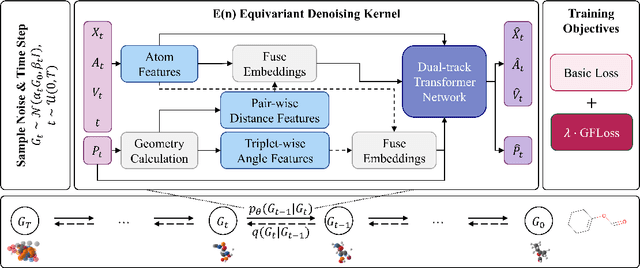
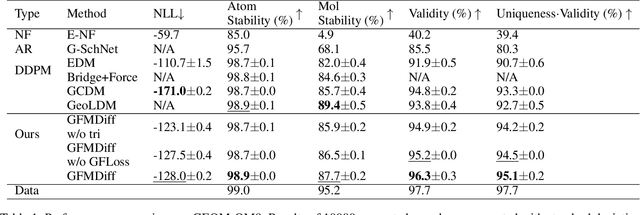

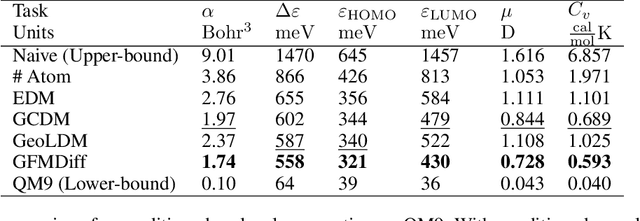
Abstract:Denoising diffusion models have shown great potential in multiple research areas. Existing diffusion-based generative methods on de novo 3D molecule generation face two major challenges. Since majority heavy atoms in molecules allow connections to multiple atoms through single bonds, solely using pair-wise distance to model molecule geometries is insufficient. Therefore, the first one involves proposing an effective neural network as the denoising kernel that is capable to capture complex multi-body interatomic relationships and learn high-quality features. Due to the discrete nature of graphs, mainstream diffusion-based methods for molecules heavily rely on predefined rules and generate edges in an indirect manner. The second challenge involves accommodating molecule generation to diffusion and accurately predicting the existence of bonds. In our research, we view the iterative way of updating molecule conformations in diffusion process is consistent with molecular dynamics and introduce a novel molecule generation method named Geometric-Facilitated Molecular Diffusion (GFMDiff). For the first challenge, we introduce a Dual-Track Transformer Network (DTN) to fully excevate global spatial relationships and learn high quality representations which contribute to accurate predictions of features and geometries. As for the second challenge, we design Geometric-Facilitated Loss (GFLoss) which intervenes the formation of bonds during the training period, instead of directly embedding edges into the latent space. Comprehensive experiments on current benchmarks demonstrate the superiority of GFMDiff.
Technical Report for Argoverse Challenges on 4D Occupancy Forecasting
Nov 27, 2023Abstract:This report presents our Le3DE2E_Occ solution for 4D Occupancy Forecasting in Argoverse Challenges at CVPR 2023 Workshop on Autonomous Driving (WAD). Our solution consists of a strong LiDAR-based Bird's Eye View (BEV) encoder with temporal fusion and a two-stage decoder, which combines a DETR head and a UNet decoder. The solution was tested on the Argoverse 2 sensor dataset to evaluate the occupancy state 3 seconds in the future. Our solution achieved 18% lower L1 Error (3.57) than the baseline and got the 1 place on the 4D Occupancy Forecasting task in Argoverse Challenges at CVPR 2023.
Technical Report for Argoverse Challenges on Unified Sensor-based Detection, Tracking, and Forecasting
Nov 27, 2023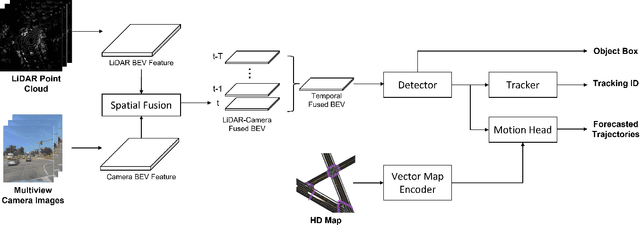

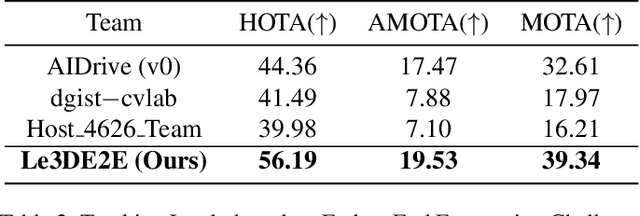

Abstract:This report presents our Le3DE2E solution for unified sensor-based detection, tracking, and forecasting in Argoverse Challenges at CVPR 2023 Workshop on Autonomous Driving (WAD). We propose a unified network that incorporates three tasks, including detection, tracking, and forecasting. This solution adopts a strong Bird's Eye View (BEV) encoder with spatial and temporal fusion and generates unified representations for multi-tasks. The solution was tested in the Argoverse 2 sensor dataset to evaluate the detection, tracking, and forecasting of 26 object categories. We achieved 1st place in Detection, Tracking, and Forecasting on the E2E Forecasting track in Argoverse Challenges at CVPR 2023 WAD.
Finding Dynamics Preserving Adversarial Winning Tickets
Mar 06, 2022
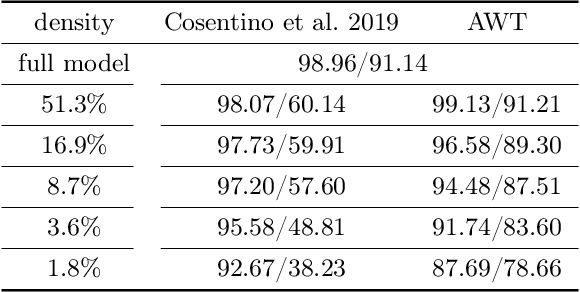
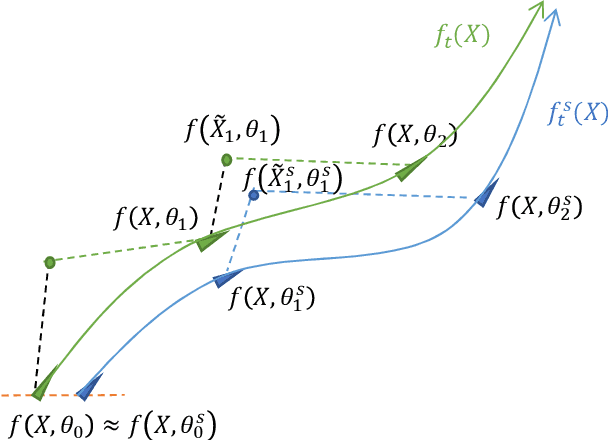

Abstract:Modern deep neural networks (DNNs) are vulnerable to adversarial attacks and adversarial training has been shown to be a promising method for improving the adversarial robustness of DNNs. Pruning methods have been considered in adversarial context to reduce model capacity and improve adversarial robustness simultaneously in training. Existing adversarial pruning methods generally mimic the classical pruning methods for natural training, which follow the three-stage 'training-pruning-fine-tuning' pipelines. We observe that such pruning methods do not necessarily preserve the dynamics of dense networks, making it potentially hard to be fine-tuned to compensate the accuracy degradation in pruning. Based on recent works of \textit{Neural Tangent Kernel} (NTK), we systematically study the dynamics of adversarial training and prove the existence of trainable sparse sub-network at initialization which can be trained to be adversarial robust from scratch. This theoretically verifies the \textit{lottery ticket hypothesis} in adversarial context and we refer such sub-network structure as \textit{Adversarial Winning Ticket} (AWT). We also show empirical evidences that AWT preserves the dynamics of adversarial training and achieve equal performance as dense adversarial training.
 Add to Chrome
Add to Chrome Add to Firefox
Add to Firefox Add to Edge
Add to Edge